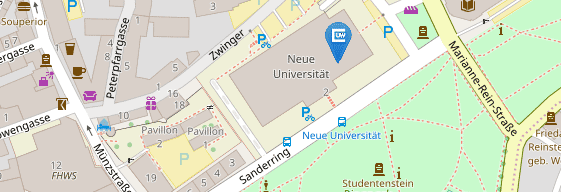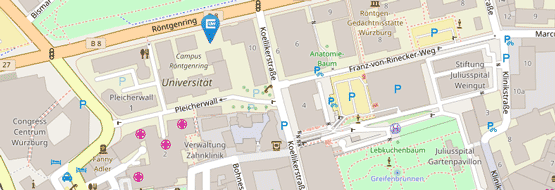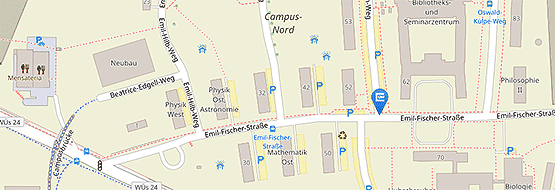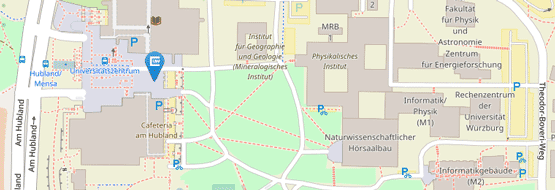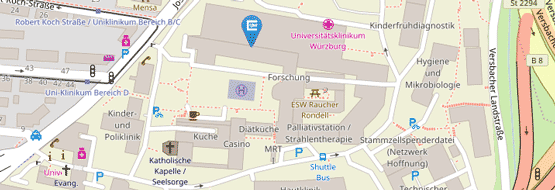Projekt A1 Förster
Das circadiane Uhrnetzwerk ausgewählter Insekten
Zusammenfassung
Eine wichtige Voraussetzung zum Verständnis des täglichen “Timing” von Insekten ist die funktionelle Charakterisierung des neuronalen Uhrennetzwerks im Gehirn. Wir werden zu diesem Verständnis beitragen, indem wir das Uhrennetzwerk von verschiedenen Drosophila-Arten mit sequenzierten Genomen und mit unterschiedlichen Lebensräumen (z.B. Vorkommen an verschiedenen Breitengraden und auf verschiedenen Meereshöhen) aufklären. Zusätzlich werden wir beginnen die Innere Uhr von selektierten Hymenopterenarten und von verschiedenen Blattlaus-Morphen auf molekularer und neuronaler Ebene zu erforschen. Dabei handelt es sich um Arten, die in den Bereichen B und C untersucht werden.
Publikationen
-
The Neuropeptide PDF Is Crucial for Delaying the Phase of Drosophila’s Evening Neurons Under Long Zeitgeber Periods. . In J Biol Rhythms, 36(5), pp. 442–460. 2021.
-
The Pigment-Dispersing Factor neuronal network systematically grows in developing honey bees. . In Journal of Comparative Neurology, 530(9), pp. 1321–1340. 2021.
- [ URL ]
-
Endocrine signals fine-tune daily activity patterns in Drosophila. . In Curr Biol, 31(18), pp. 4076–4087.e5. 2021.
-
A Functional Clock Within the Main Morning and Evening Neurons of D. melanogaster Is Not Sufficient for Wild-Type Locomotor Activity Under Changing Day Length. . In Frontiers in Physiology, 11, p. 229. 2020.
- [ URL ]
-
Loss of function in the Drosophila clock gene period results in altered intermediary lipid metabolism and increased susceptibility to starvation. . In Cellular and Molecular Life Sciences, 77, pp. 4939–4956. 2020.
- [ URL ]
-
Single-cell resolution long-term luciferase imaging in cultivated Drosophila brains.. . 2020.
- [ URL ]
-
Post-embryonic Development of the Circadian Clock Seems to Correlate With Social Life Style in Bees. . In Frontiers in Cell and Developmental Biology, 8, p. 1325. 2020.
- [ URL ]
-
A distinct visual pathway mediates high light intensity adaptation of the circadian clock in Drosophila. . In Journal of Neuroscience, 39(9), pp. 1621–1630. 2019.
- [ URL ]
-
The Circadian Clock Improves Fitness in the Fruit Fly, Drosophila melanogaster. . In Front Physiol, 10, p. 1374. 2019.
-
Light-mediated circuit switching in the Drosophila neuronal clock network. . In Current Biology, 29(19), pp. 3266–3276.e3. 2019.
- [ URL ]
-
Role of Rhodopsins as Circadian Photoreceptors in the Drosophila melanogaster. . In Biology, 8(1), p. 6. 2019.
- [ URL ]
-
Life at High Latitudes Does Not Require Circadian Behavioral Rhythmicity under Constant Darkness. . In Current Biology, 29(22), pp. 3928–3936.e3. 2019.
- [ URL ]
-
Peptidergic signaling from clock neurons regulates reproductive dormancy in Drosophila melanogaster. . In PLoS Genet, 15(6), p. e1008158. 2019.
-
Closely Related Fruit Fly Species Living at Different Latitudes Diverge in Their Circadian Clock Anatomy and Rhythmic Behavior. . In J Biol Rhythms, 33(6), pp. 602–613. 2018.
-
Sleep in Insects. . In Annual Review of Entomology, 63(1). 2018.
- [ URL ]
-
Flies as models for circadian clock adaptation to environmental challenges. . In European Journal of Neuroscience, 51(1), pp. 116–181. 2018.
- [ URL ]
-
Pigment-Dispersing Factor-expressing neurons convey circadian information in the honey bee brain. . In Open Biology, 8(1), p. 170224. 2018.
- [ URL ]
-
Cryptochrome interacts with actin and enhances eye-mediated light sensitivity of the circadian clock in Drosophila melanogaster. . In Frontiers in Molecular Neuroscience, 11, p. 238. 2018.
- [ URL ]
-
Adaptation of circadian neuronal network to photoperiod in high-latitude European Drosophilids. . In CURR BIOL, 27, pp. 833–839. 2017.
- [ URL ]
-
A new Rhodopsin influences light-dependent daily activity patterns of fruit flies. . In Journal of biological rhythms, 32(5), pp. 406–422. 2017.
- [ URL ]
-
Organization of Circadian Behavior Relies on Glycinergic Transmission. . In Cell Reports, 19(1), pp. 72–85. 2017.
- [ URL ]
-
A neural network underlying circadian entrainment and photoperiodic adjustment of sleep and activity in Drosophila. . In J Neurosci, 36(35), pp. 9084–9096. 2016.
- [ URL ]
-
Drosophila ezoana uses an hour-glass or highly damped circadian clock for measuring night length and inducing diapause. . In Physiol Entomol, 41(4), pp. 378–389. 2016.
- [ URL ]
-
Circadian light-input pathways in Drosophila. . In Commun Integr Biol, 9(1), p. e1102805. 2016.
- [ URL ]
Kontakt/Contact
Prof. Dr. Charlotte Förster
Lehrstuhl Neurobiologie und Genetik
Biozentrum der Universität Würzburg
Am Hubland
D-97074 Würzburg
Phone: +49 931 31-84450 (Sekretariat/Office)
Mail: sfb1047@uni-wuerzburg.de

